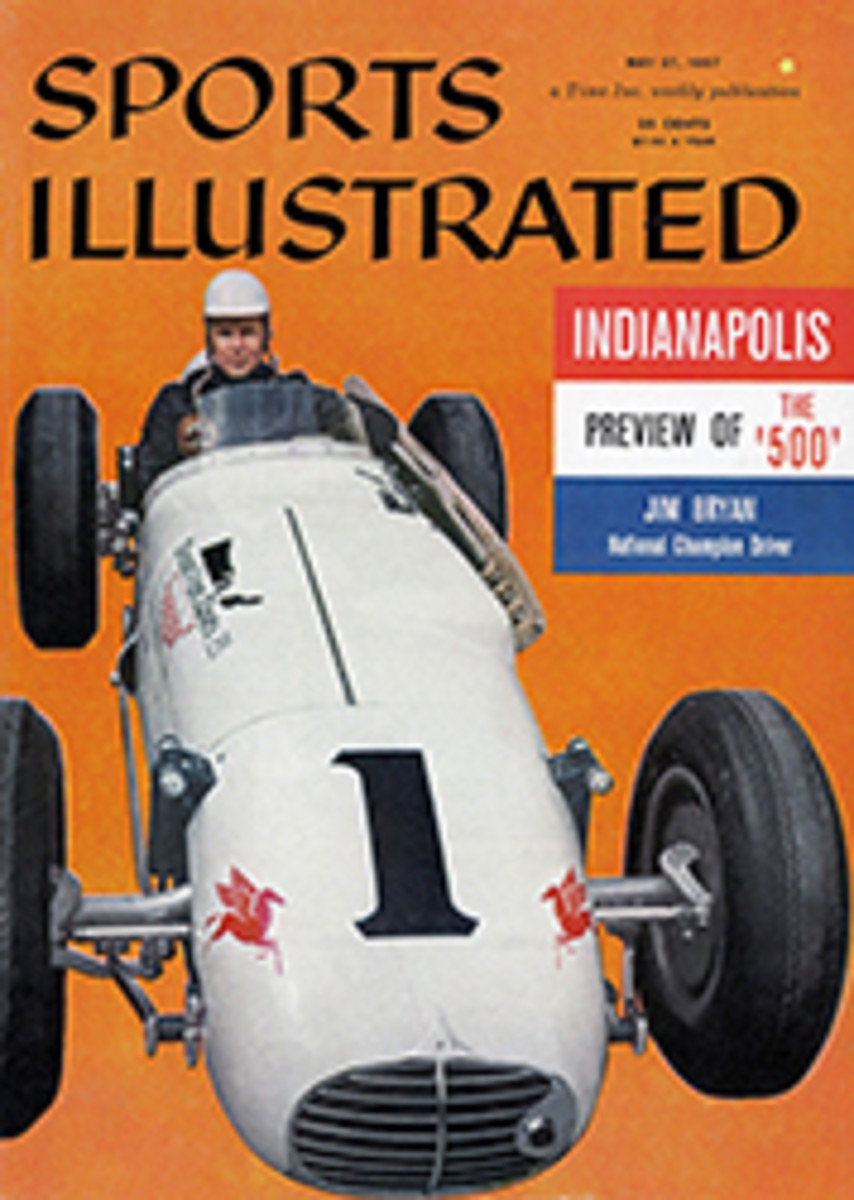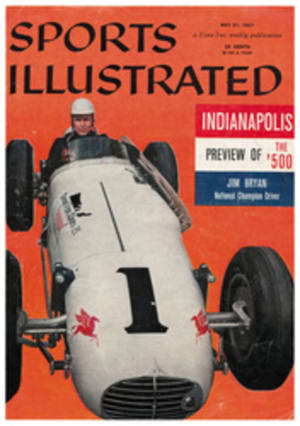
ONE TOWN'S SECRET
Some people might think that Newtown, Conn. (pop. 8,700) is old-fashioned. For one thing, motorists are forced to maneuver around a flagpole that sprouts unexpectedly from the center of the main street. The flag was placed there in pre-horseless-carriage days to celebrate America's 100th birthday, and no one would think of moving it just because it has become a traffic hazard. Another old-fashioned practice in Newtown is to raise strong and healthy children. Nobody there understands the national cry that most U.S. youngsters are delinquent slouches without properly developed muscles. Newtown's young people aren't like that. Every youngster there is physically active, a situation that is usually associated with an earlier American era.
Of all the U.S. public schools given the Kraus-Weber test of a minimum muscular fitness, Newtown High School has the highest score. Only 11.8% of the students failed as compared with the 57.9% failure of Americans tested generally and 8.7% of Europeans—the ratio that caused so much alarm in the well-known Kraus-Prudden report of 1955 (SI, Aug. 15, 1955). Schools in other cities were proud to beat the original 57.9% score. Pittsburgh reported a 42.9% failure and Omaha boasted of 24%, but none has done better than the 362-pupil Newtown High. What is the explanation? Is there something special about the Newtown child? Is fitness inherent there? Or does Newtown High have a secret method?
Newtown does have a secret, and it's a simple one at that. The modern notion that you have to spend lots of money for fancy equipment and extra personnel has nothing to do with Newtown's method. It comes down to an old-fashioned idea: the character of a man. The man is Coach Harold S. DeGroat, and he believes that to enjoy life you have to live it vigorously. This, he feels, requires a body as well as a mind kept in good shape through energetic use. This philosophy has led him to insist on a minimum of an hour of physical education per day per pupil and the inclusion of calisthenics—which discipline as well as condition the body—during some part of that hour.
Today it is fashionable among many physical educators to denounce calisthenics as "foreign" and inimical to our democratic tradition of team sports. The amount of time allotted for physical education classes has been permitted in some cases to drop as low as one hour per week. DeGroat goes on the theory that it takes time and hard work to build bodies, and it cannot be accomplished merely with entertaining games.
In reaffirming this old truth, DeGroat paradoxically emerges among his professional colleagues as a downright revolutionary, in the company of such suspiciously nonprofessional and maddeningly successful fitness experts as Bonnie Prudden.
DeGroat's hour-a-day minimum exercise theory has grown out of 43 years in the field, beginning with his training at the fount of physical education, Springfield College, Springfield, Mass. Before he accepted his post at Newtown 13 years ago, he stipulated that the daily hour was a condition of his taking the job. Today this firm position is still supported by Superintendent of Schools Carl A. LeGrow and Principal James F. Hinckley. His conviction is statistically corroborated by a study done at Indiana University by the late Dr. Frank Stafford, which shows that youngsters in the Indiana public school system who got daily exercise did much better on motor fitness tests than those who had less than an hour per day.
A DAILY SIZZLE
DeGroat said recently: "I've always felt that if you need a daily program in English, you need one in physical education to keep your body strong and learn to get along with people. You don't get those qualities in an English class. Gym and field work are just like chemistry: you can warm kids up and make 'em sizzle. That's how they learn to control their emotions. They learn leadership and followership, which are both invaluable."
"When I first came here," he continued, "the kids were like a bunch of crows; all they wanted to do was sit down." Underlining the difference now, he let out the delighted whoop he uses for a laugh and pointed to a large poster on the gym wall: "While Young We Build Strength of Body, Agility, Endurance, Good Grooming. These Objectives Cannot Be Attained by Sitting. They Require ACTION!"
And action is what DeGroat has given them. In the school's modern two-in-one gym, 90 by 65 feet, which can be divided into separate gyms for boys and for girls or thrown open into one mammoth room, the coach and pretty Miss Ann Anderson, who teaches the girls, lead their charges at a pace that would tire a Marine. A typical class starts with 10 or 15 minutes of vigorous calisthenics followed by drills to increase skills in soccer, basketball, baseball and badminton. Some of the boys who are track enthusiasts finish up with a half-mile cross-country run, others are finally allowed a few minutes of actual game play. One boy remarked feelingly after class: "It digs your guts out"; but he was the same boy who proudly demonstrated push-ups to the rest of the class because he did them better than anyone else. "If it hurts a little, forget about it," DeGroat says casually. And the amazing thing in this comfort-loving age is the children's response to this Spartan attitude.
They idolize DeGroat and Miss "Andy," and each youngster works hard to increase his proficiency. The competition is primarily with themselves, to better their own scores, and a triumphant "I couldn't do that last year" is a common cry in the gym and on the field. One student who had transferred from another school said: "Gee, this is so different here. I'm crazy about this. I couldn't even call what they had at the other school a physical education program. We had classes about once or twice a week, and we didn't learn much."
The children's enthusiasm for DeGroat and his program is shared by the adults in Newtown. They flock to admire his work every spring at the annual gym show his students put on, and he holds a place as a beloved and well-known member of the community enjoyed by few men in his position. Everywhere he goes he is greeted affectionately. A valued member of the Rotary Club, his opinions on the town's welfare are eagerly sought and respectfully considered. This is quite an achievement in a Connecticut Yankee town where you're a stranger unless born there.
In his capacity as town recreation director he is always on the go to see that school facilities aren't used only during school hours. In the summer he arranges for buses to pick up children at their homes and bring them to playgrounds and the new public swimming pool. In his rare hours at home he puts out a biweekly physical fitness newsletter garnished with pertinent quotes on everything from medical opinion on the necessity for exercise to Albert Schweitzer on the necessity for kindness.
Two months ago the Connecticut Association for Health, Physical Education and Recreation gave him its top professional honor award. Although he was pleased, his main reaction was: "It's my 43rd year in teaching; I ought to know how."
PHOTO
SUSAN GREENBURG
WITH SCHOOL IN THE BACKGROUND, BOYS OF NEWTOWN HIGH START ON A HALF-MILE CROSS COUNTRY RUN THAT TAKES THEM DOWN A BEAUTIFUL COUNTRY LANE—THE CLIMAX TO THE MORNING'S WORKOUT
PHOTO
SUSAN GREENBURG
COACH DEGROAT at work yells encouragement to flagging players on the school field.
PHOTO
SUSAN GREENBURG
LIMBER GIRLS start the day's physical education hour with a 15-minute period of vigorous calisthenics in the girls' side of the divided two-in-one high school gymnasium.

